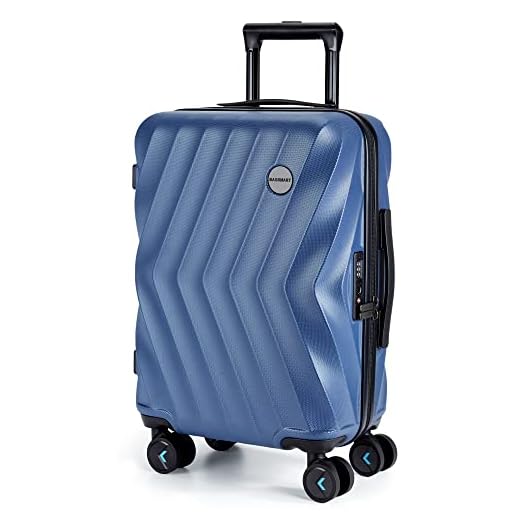

For accurate measurement, dimensions of a suitcase should be taken from the exterior. This means that the height, width, and depth are assessed based on the outer surfaces of the bag, including any protruding parts such as wheels or handles. It is crucial to adhere to this method, especially when checking size requirements for airlines or storage purposes.
While some manufacturers might provide internal dimensions, focusing solely on the exterior ensures consistency across various brands and models. Carry-on bags typically need to fit specific airline guidelines, which are primarily concerned with outside measurements. Always confirm with airline policies before traveling, as requirements vary.
In instances of purchasing or assessing travel bags, remember to verify external dimensions as a priority. This approach minimizes complications during travel or when packing efficiently for trips. Provide attention to detail in your measurements to avoid potential inconveniences.
Understanding the Measurement Standards for Luggage

For accurate assessments, consider utilizing a tape measure or ruler to determine volume specifications. Most manufacturers adhere to a standardized approach, but variations may exist based on design features and intended purpose.
Standard Measurements
Typical dimensions are expressed in inches or centimeters and include height, width, and depth. Each piece of baggage should list its measurements clearly, allowing consumers to verify compatibility with airline regulations.
Common Size Categories
Categories include carry-ons, checked bags, and oversized items. Carry-on pieces often must fit within specific cabin space limits, usually around 22 x 14 x 9 inches. Checked bags typically range from 24 to 30 inches in height, while oversize variants exceed these dimensions and may incur additional fees.
How to Measure Your Suitcase Correctly
Measure height, width, and depth with precision for accurate reading. Use a soft measuring tape for curves and irregular areas. Ensure the bag is empty and zipped to reflect actual dimensions.
Step-by-Step Measuring Guide

1. Height: Stand your bag upright. Measure from the base to the highest point, including any protrusions like wheels or handles.
2. Width: Position the suitcase flat. Measure across the widest part. If it has external pockets, keep them closed.
3. Depth: With the suitcase still laid flat, measure the side from front to back. This includes wheels and other components extending from the body.
Important Tips
Double-check measurements by repeating each step. Record each dimension in millimeters for convenience. Compare against airline restrictions before travel.
| Dimension | Notes |
|---|---|
| Height | Include wheels and extendable handles. |
| Width | Close pockets and measure at widest point. |
| Depth | Ensure the suitcase is completely flat. |
For those looking to capture memories, research the best digital camera ever made to document your travels effectively.
Impact of Measurement Differences on Airline Regulations
Airline policies often derive from varying standards of dimension assessment, influencing your travel experience. Regulations typically depend on measurements that airlines specify, which can lead to inconsistencies. For example, policies may differ regarding the interpretation of space allocations, leading to unexpected baggage fees.
Understanding these discrepancies is vital for travelers to avoid surprise charges. To ensure compliance, always consult your airline’s specific guidelines before packing. Different carriers may enforce distinct size limits, which can hinge on whether dimensions are considered from exterior or interior points.
Additionally, airlines frequently adjust their rules based on operational needs. Staying informed about recent changes can save time and money. For example, traveling with a best patio dining set with umbrella while adhering to strict luggage policies might necessitate a reevaluation of your packing strategy.
Ultimately, knowing how different airlines approach luggage sizing will aid in seamless travel. Don’t overlook any updates regarding dimensional policies on your preferred carrier’s website before departure.
Choosing the Right Luggage Size Based on Measured Dimensions

Select dimensions that correspond with transportation regulations to avoid complications. Use defined standards from manufacturers and airlines for precise fit.
Follow these guidelines:
- Airline Guidelines: Review specific measurements of your chosen carrier’s restrictions. Many impose limits on height, width, and depth.
- Personal Needs: Consider how long your trips typically last. Short excursions may require smaller units, while lengthy travels necessitate larger models.
- Weight Considerations: Ensure that your preferred choice aligns with weight restrictions. Bulkier items may incur extra fees.
- Flexibility: Opt for expandable types for added versatility. This feature allows you to adjust size based on your needs.
Utilize best luggage dividers to optimize space and keep items organized within your selected piece.
By carefully evaluating these factors, make informed choices that fit your travel style and meet necessities.








